While the garden remains a work in progress after thirty-three years, some parts are more actively worked on than others. Tiny treasures are regularly plugged wherever gaps can be found, and occasionally a tree or shrub is required to fill some larger space if something is lost in a storm. I don’t expect this will ever end, no matter that my wife snarls every time I bring a plant home. She’s had good reason to be extra snarly lately.
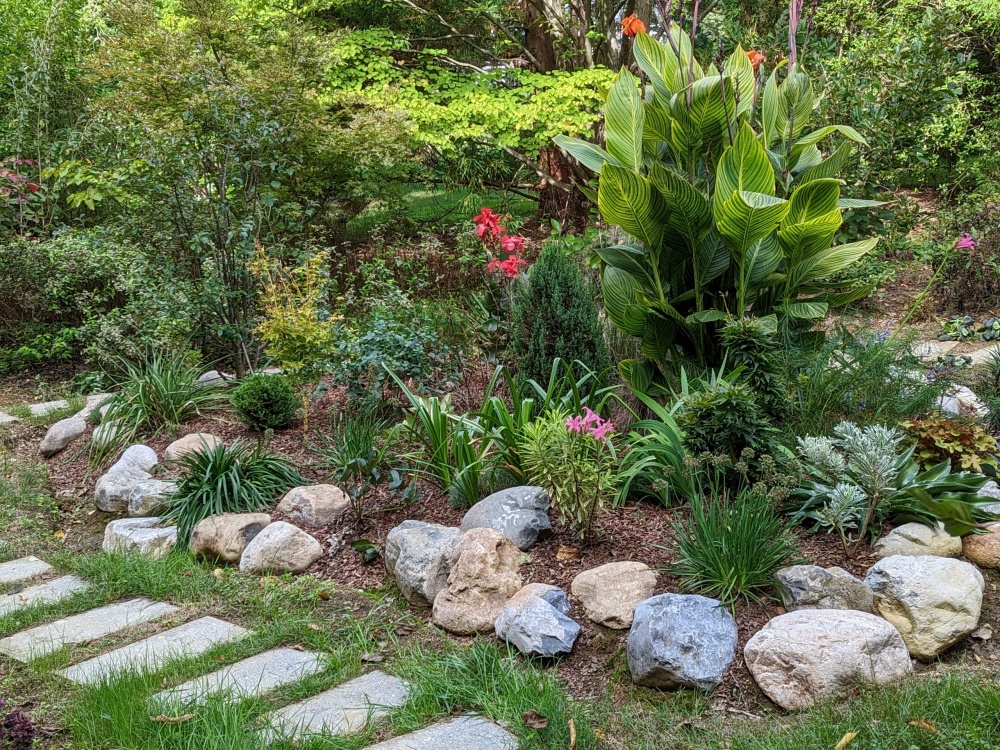
Late in autumn a year ago I finally had my fill of the damp, weedy area of lawn in the lower, rear garden. The grass was dug and soil mounded, and small boulders placed to retain the steep drainage ditches necessary to keep the area dry. I started planting early in the spring (above), and while an unexpectedly huge canna lily is only a temporary placeholder, a variegated, weeping ‘Whitewater’ redbud will be planted in a few weeks that will fill most of the remaining space once everything begins growing next spring.
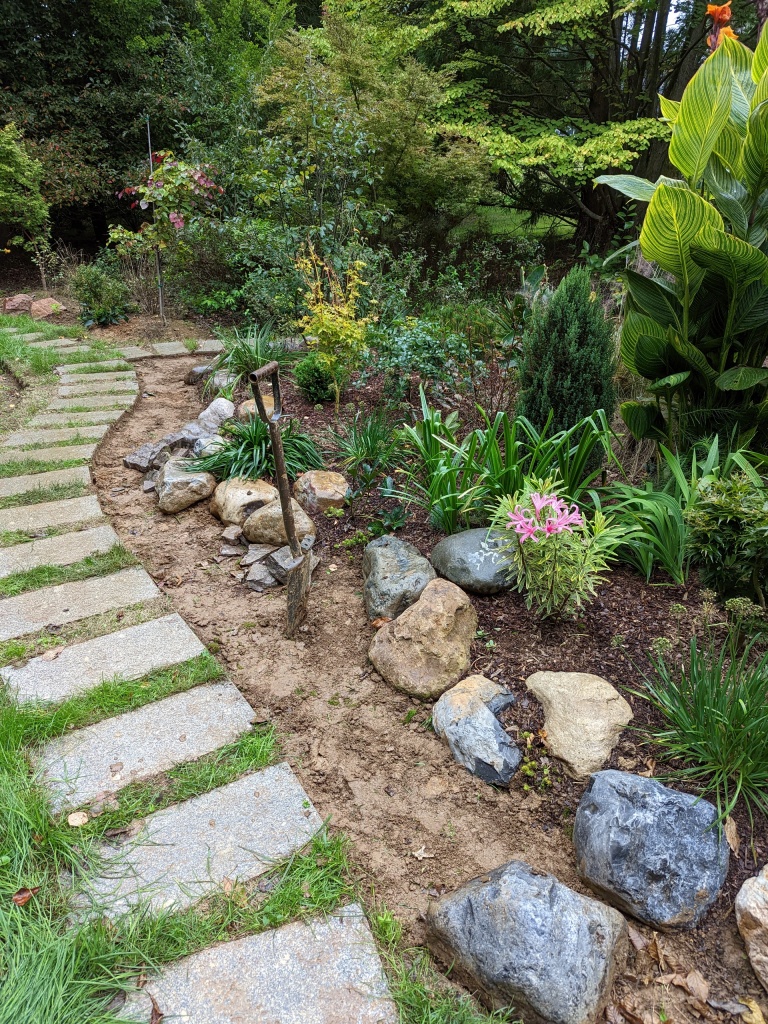
But, and of course there’s always another but, the curved swath of lawn with granite pavers down the middle continued to be plagued by weeds. So, while I look for fillers to replace the grass, I was recently inspired to remove a section of lawn right up to the pavers (above) to construct a rock garden (below).
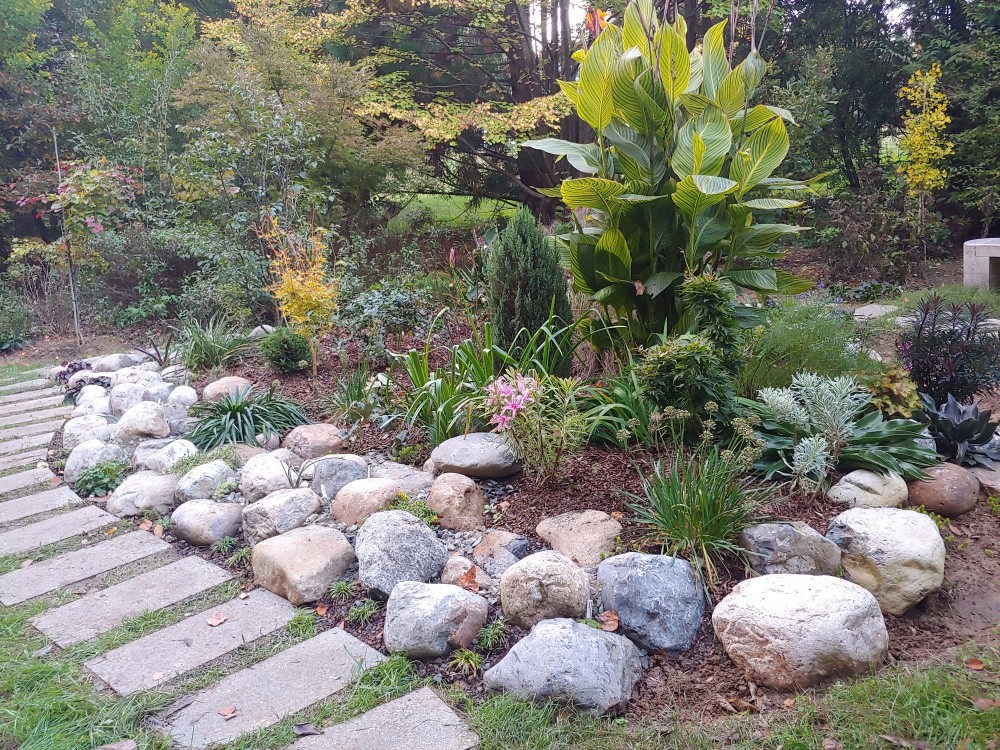
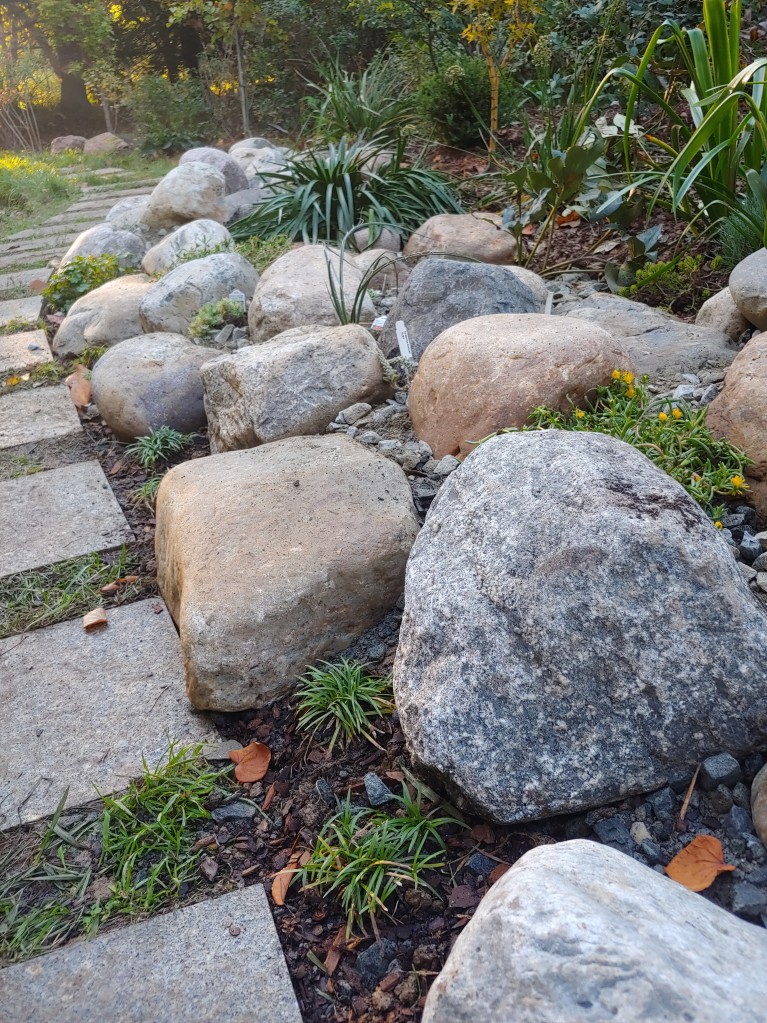
There are boulder walls scattered around the garden, and I particularly enjoy ones in shaded areas with native ferns and coral bells (Heuchera) tucked into the crevices. These thrive in a small amount of soil, but I’ve failed more than once with rock garden plants in sunny spots. Any soil seems too much, even with the addition of coarse material to improve drainage, so I’ve been determined to do a proper rock garden. Until recently, no sunny areas seemed appropriate.

I’ve seen substantial rock gardens using large flat stones, and while I claim to have never read a book, I recently scanned The Crevice Garden by Kenton Seth and Paul Spriggs. This pushed me over the top to get started, though there was not adequate space for a rock garden anywhere close to the scale I would prefer.
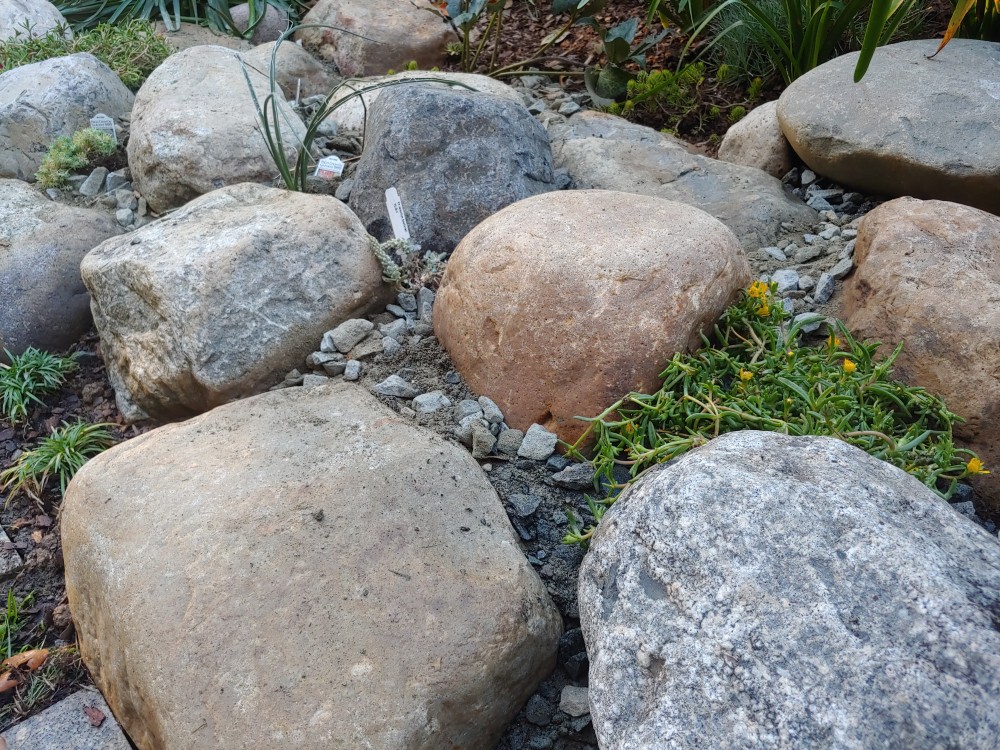
My little garden was to be slightly elevated with small, rounded boulders to match ones already retaining the slope, but instead of a soil mix, the backfill would be entirely gravel and sand. I’ve moved many tons of boulders in this garden over the years, so moving another truckload was not too big a deal.
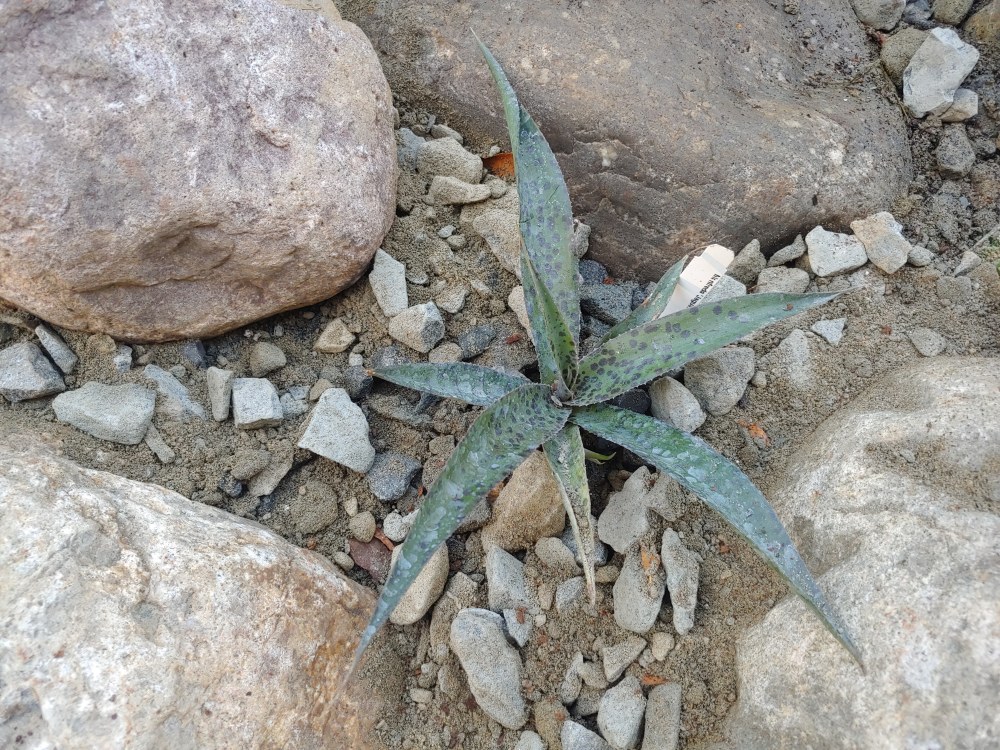
Aside from a few aches the next day in my aged back, a few of the granite stepping stones were cracked while wheelbarrowing, but all boulders were placed as naturally as possible and backfilled with the gravel mix. Several sedums were transplanted into the gravel, and two deliveries of succulents and ice plants arrived just as the boulders and the backfill were completed. These are tiny, and some might take a few years to show up, but the rock garden turned out just about how I envisioned it.
The video below will show some of the work in progress …
Love the pictures that show the progression of this area. Nice video, too. Thanks, Tom
I got caught up in the building, so I skipped catching the backfill in action. I’ve added a few more plants, but now the leaves are falling so I won’t see much of it until spring.
Oh, your Canna still look great. I know it is irrelevant, but when I hear about how autumn is moving into some regions, I sort of expect some of the plants that dislike cool weather to start to show associated symptoms.
You know, stone should be more popular here in our chaparral climates than it is. I saw more of it in the Pacific Northwest, where water conservation is less of a concern. Well, water conservation here is a long and annoying story anyway.
The cannas aren’t great any longer. Three consecutive nights below freezing did the trick. Stone is everywhere in our landscapes. Out in the country where I am there are stacked stone walls around every old farm. and plenty of aged stone houses. Since we border the mountains we have plenty of stone scenes to replicate though our yearly moisture grows a different set of plants than on the west coast.
Oh my! I would say that it seems early for that sort of frost, but somehow, we already got our first frost warning also. Nothing happened, but it was a surprise, and makes me feel a little left out.
Stone is not so common as a structural component of architecture here, although it adorns the facades of some old buildings. It is not so resilient to seismic activity. Some stone features within landscapes are actually debris from buildings that were damaged by the Loma Prieta Earthquake. The detail of carved stone is easier to see in a garden than high up on the facade of a large building downtown.
I try not to bring up the days (when dinosaurs roamed) when early October frosts and freezes were common. A year ago our first freeze was the second week of November.